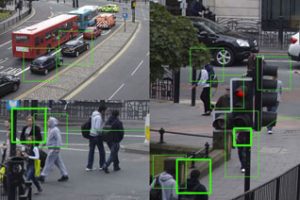Future of Data Growth
I’m certain anyone reading this is well aware of the statistics about Data growth and how it is impacting storage requirements across all industries. This isn’t a new challenge in our industry, but the conversation does have an added twist when we consider the impact of IoT. We commonly read about companies experiencing anywhere from 20% to 50% year over year growth. The terms “exploding!”, “explosive”, and “exponential” are usually found in articles associated with data growth (and now I’ve used all three in one post). While this data growth continues to be spurred on by the traditional sources associated with business data (databases, documents, email, etc.), we are seeing even greater capacity requirements being generated by IoT devices.
For this post, when I speak of data from IoT, I am lumping together data generated by security video, temperature gauges, vibration sensors, connected cars… you get the idea. In fact, according to some sources, IoT data is 10x the growth of that associated with traditional data sets. And, IDC estimates IoT devices will grow to 28.1 Billion by 2020. So, data collected from these devices, and storage solutions needed to maintain this data, will become increasingly important.
Storage for IoT Data
Among our clients, we see a tremendous growth in the need for storage to maintain Security Surveillance Video. Beyond simply providing a place for video streams to be written, our clients are analyzing the video; utilizing software to perform anomaly detection, facial recognition, etc. I shared a couple posts recently, written by two of my colleagues at Zunesis, that expands on this topic. And, Analytics isn’t isolated to video only. The value of IoT devices is that they capture data at the edge, where it is happening, and this is true across all IoT devices. Once collected, software can perform analysis of the data to derive meaning beyond the data points and, in many cases, produce actionable insights. So, storage required for IoT data needs to be able to hit large scale quickly and have performance characteristics that allow analytics in near real time. And, of course, this storage still needs to provide reliability and availability associated with any business-critical data.
To meet the storage requirements defined above, HPE has created a hardware platform and partnered with two software defined storage (SDS) companies to provide solutions for scale-out storage that will grow from a couple hundred terabytes to petabytes and provide both the reliability and performance required of the data generated by the ever-expanding number of IoT devices. The HPE hardware is part of the HPE Apollo family. The software that utilizes this hardware comes from Software Defined Storage providers, Qumulo and Scality. Here is a summary for each of these solution components:
The Apollo Family of compute and storage:
The Apollo Family of systems from HPE are each designed to provide compute, storage, and networking that meet the needs of both scale-up and scale-out requirements. They are targeted at workloads supporting Big Data, analytics, object storage and high-performance computing.
The scale-out compute part of the HPE Apollo System portfolio includes the Apollo 2000 System for hyperscale and general-purpose scale-out computing, the Apollo 4000 System Family is targeted at Big Data analytics and object storage while the Apollo 6000 and 8000 Systems are designed to support HPC and supercomputing. Density, ease of management (all incorporate HPE iLO management), and efficient rack-scalability are features shared by all members of the portfolio.
Qumulo File Fabric (QF2)
Qumulo is a software defined scale-out NAS that scales to billions of files in a flash-first design. With the Apollo/Scality solution, you can scale from 200TB to over 5PB of usable capacity. This solution uses advanced block-level erasure coding and up-to-the minute analytics for actionable data management. The file services provided by Qumulo are also supported in the public cloud, currently on Amazon Web Services.
Use cases include:
- Media & Entertainment
- Security Video
- Life Sciences & Medical Research
- Higher Education
- Automotive
- Oil & Gas
- Large Scale Online/Internet
- Telco/Cable/Satellite
- Earth Sciences
Scality RING
Scality is a a software defined Scalable Object Storage solution that supports trillions of objects in a single namespace. With the Apollo/Qumulo solution, you can scale to over 5PB of usable capacity. The access and storage layers can be scaled independently to thousands of nodes that can be accessed directly and concurrently with no added latency.
Use cases include:
- Media & Entertainment
- Security Video
- Financial Services
- Medical Imaging
- Service Providers
- Backup Storage
- Public Sector
So, yes, data footprint is growing and won’t be slowing down anytime soon. If your data set is outside the traditional business data sets and requires scale-out storage that supports large numbers of files and the ability to perform actionable analysis quickly, then you probably need to look outside of the traditional scale-up storage solutions and look at solutions purpose-built for these large-scale workloads. HPE Apollo, Qumulo, and Scality are a great starting point for your research.
Simple, Secure, Scalable
If you follow the announcements from major networking vendors you will have noticed a trend, at least in the marketing, for new solutions that are emerging from these companies. Every whitepaper or datasheet you read will have the key words “Simple”, “Secure”, and “Scalable” littered throughout the document. The reason for this is because, from a high level, these are some of the most important factors for customers when making a purchasing decision.
One solution I have found that lives up to those key words is Aruba’s new SD Branch solution. This solution is intended to help enterprise customers modernize their branch networks for the ever-evolving network requirements that IT needs to support. According to Aruba, the new SD Branch offering is
“Ideally suited for distributed enterprises undergoing digital transformation, Aruba SD-Branch delivers optimized branch experiences with simplicity at enterprise scale and integrated, best-in-class security. Retail, hospitality, and healthcare organizations can manage SD-WAN, WLAN, LAN, and unified policy for thousands of sites in the cloud.”
But how is it delivering on those marketing key-words?
Simplicity for the Distributed Enterprise
For enterprises, this new SD-Branch solution offers cloud-based management option that allows them to provide remote, centralized provisioning and management of both wired and wireless connections within the branch and through WAN and internet connections in the SD-WAN infrastructure. The idea behind it is to give IT the ability to implement new services and make network changes quickly even across huge environments that are distributed throughout different locations and departments. So you can manage everything from one centralized console without needing multiple programs for different functions or parts of the enterprise.
Within the branch, Aruba’s new service offers granular QoS through application, user, and device contextual awareness. This functionality also extends across the WAN for SaaS, mobile UC, and other remote applications. This is meant to simplify how LAN and WAN traffic gets prioritized and routed, both inside and outside of the branches, giving IT teams the ability to deliver a consistent experience across the organization regardless of device type, user role within the organization, or physical location on the network.
Integrated Security
Of course, security is a major concern with basically any new tech offering. Aruba offers intra-branch and WAN policy enforcement capabilities that are both automated and granular. Aruba has a new set of Aruba 360 security exchange technology partners that deliver cloud-based firewall and threat protection to help IT keep all of the organization’s digital assets safe and protected.
Scalability
Aruba’s SD Branch solution is managed and configured in the cloud using a tool called Aruba Central. Central has been around for a while now and is most commonly used to manage large dispersed wireless access. The management functionality, along with the new “WAN analytics” piece I discussed above, have been extended to include the branch gateways at each location. Being a cloud management tool first and foremost Central can scale to meet the demands of any network (as they have been doing for years with some of Aruba’s largest dispersed customers), so customers have the peace of mind that their investment will be protected, no matter how large they grow, for years to come.
Simple, Secure, Scalable
If you follow the announcements from major networking vendors you will have noticed a trend, at least in the marketing, for new solutions that are emerging from these companies. Every whitepaper or datasheet you read will have the key words “Simple”, “Secure”, and “Scalable” littered throughout the document. The reason for this is because, from a high level, these are some of the most important factors for customers when making a purchasing decision.
One solution I have found that lives up to those key words is Aruba’s new SD Branch solution. This solution is intended to help enterprise customers modernize their branch networks for the ever-evolving network requirements that IT needs to support. According to Aruba, the new SD Branch offering is
“Ideally suited for distributed enterprises undergoing digital transformation, Aruba SD-Branch delivers optimized branch experiences with simplicity at enterprise scale and integrated, best-in-class security. Retail, hospitality, and healthcare organizations can manage SD-WAN, WLAN, LAN, and unified policy for thousands of sites in the cloud.”
But how is it delivering on those marketing key-words?
Simplicity for the Distributed Enterprise
For enterprises, this new SD-Branch solution offers cloud-based management option that allows them to provide remote, centralized provisioning and management of both wired and wireless connections within the branch and through WAN and internet connections in the SD-WAN infrastructure. The idea behind it is to give IT the ability to implement new services and make network changes quickly even across huge environments that are distributed throughout different locations and departments. So you can manage everything from one centralized console without needing multiple programs for different functions or parts of the enterprise.
Within the branch, Aruba’s new service offers granular QoS through application, user, and device contextual awareness. This functionality also extends across the WAN for SaaS, mobile UC, and other remote applications. This is meant to simplify how LAN and WAN traffic gets prioritized and routed, both inside and outside of the branches, giving IT teams the ability to deliver a consistent experience across the organization regardless of device type, user role within the organization, or physical location on the network.
Integrated Security
Of course, security is a major concern with basically any new tech offering. Aruba offers intra-branch and WAN policy enforcement capabilities that are both automated and granular. Aruba has a new set of Aruba 360 security exchange technology partners that deliver cloud-based firewall and threat protection to help IT keep all of the organization’s digital assets safe and protected.
Scalability
Aruba’s SD Branch solution is managed and configured in the cloud using a tool called Aruba Central. Central has been around for a while now and is most commonly used to manage large dispersed wireless access. The management functionality, along with the new “WAN analytics” piece I discussed above, have been extended to include the branch gateways at each location. Being a cloud management tool first and foremost Central can scale to meet the demands of any network (as they have been doing for years with some of Aruba’s largest dispersed customers), so customers have the peace of mind that their investment will be protected, no matter how large they grow, for years to come.
Video Analytics and Theft
Imagine a manufacturing company with an 80,000 square foot plant, multiple exits and shipping docks, 200 employees and several products which are as small as the palm of a hand or as big as the flatbed of a pickup truck.
Obviously a lot of elements to this scenario. Now imagine there has been theft which has been taking place during and after hours of operation. This threat has been going on for at least six months and product loss has started to affect cost of goods.
This is where video analytics comes into play. Now, there might (actually should) be video cameras set up throughout the facility, but they are missing the video analytics component. With video analytics, the possibilities of detection are endless and evolving every day.
Anomaly Detection
The specific package for this scenario could be “Anomaly Detection.” Anomaly detection has the ability to pick up on something that is not deemed normal in any environment. For example, if all employees are wearing uniforms, but there’s one individual who is not wearing a uniform and is hanging around an exit door or shipping document, this would send an alert for security to investigate.
Or another example would be if running wasn’t allowed in the facility, and cameras show two or three individuals (wearing uniforms) running towards an exit door. Is there a fire, emergency or are they actually trying to steal something? Another possibility is there is supposed to be 7 employees in a designated area and there are only 6 or more than 7, anomaly detection has the ability to send out an alert to specific personnel to investigate the abnormal activity.
Facial Recognition
 Another package for this scenario could be “Facial Recognition.” Maybe the facility doesn’t have uniforms for its employees, but through the use of Facial recognition, the organization knows exactly who’s working for the company and where their work-station is. Each morning or evening when employees walk, facial recognition could identify all the certified employees. However, what if one person wasn’t identified. Who is he/she? Where is he/she? What is he/she doing? Again, another alert could be sent to Security to investigate.
Another package for this scenario could be “Facial Recognition.” Maybe the facility doesn’t have uniforms for its employees, but through the use of Facial recognition, the organization knows exactly who’s working for the company and where their work-station is. Each morning or evening when employees walk, facial recognition could identify all the certified employees. However, what if one person wasn’t identified. Who is he/she? Where is he/she? What is he/she doing? Again, another alert could be sent to Security to investigate.
Maybe there’s a specific section of the plant where the majority of theft is taking place. Facial Recognition could identify the employees who have that work station and Anomaly detection might be able to identify abnormal activity from a specific employee or employees.
The options and scenarios are endless and over time, video analytics has the ability to self-learn. By Machine Learning, the ability to identify abnormal activities will continue to multiply and also identify exactly who is supposed to be (and not supposed to be) where and when.
This is just one example where video analytics could be useful in so many ways; safety, cost-efficiency, theft prevention, security, etc.
More Scenarios
A casino would be able to identify when a ‘high-roller’ walks into their establishment. The concierge would greet that person with the ‘VIP’ treatment (i.e. favorite beverage, favorite table, etc.). It would also be able to identify abnormalities which could spot card-counters or cheating in anyway. Underage gambling may also be reduced due to facial recognition. Addicted gamblers could be removed from the building if they put themselves on a self-ban list.
An issue at the forefront right now and probably the most important issue at hand is children’s safety in schools. Anomaly detection would be able to detect if a person should or should not be in a specific location of the school. Facial recognition could identify whether the person is a student, employee or security guard. If not, alerts can be executed and initiate all sorts of preventative measures (classroom doors auto-lock, 911 notified, security guards sent to the specific area, etc.).
What about school buses? Facial recognition would be able to identify and count the number of children on a specific bus. If John or Jane Smith is not on the bus, an alert would be notified. Anomaly detection could identify bullying or fighting or any abnormal behavior taking place on the bus. What if a random person tried to board the bus?
Again, the options are endless. There will be a lot of learning from a human standpoint and a machine learning standpoint. As listed here, I think we all would agree there are certain areas which need to be implemented as soon as possible.
We recently put out a quiz that lets you know what kind of IT Superhero you are. (If you haven’t taken it, go take it now! https://www.zunesis.com/it-super-hero-quiz ) The personality types we highlighted in this quiz, and their respective IT superheroes, got me thinking. It all reminded me of another famous comic team who was a huge part of my childhood: The Teenage Mutant Ninja Turtles. The parallels were pretty shockingly accurate and represents the colorful personalities we interact with in our industry every day.
The “Leonardo”- The IT Leader.
 Leonardo is the eldest brother and represents the most traditional line of IT experts. Known to take charge, lead by example, and be the most in-line with traditional Ninja teachings. People in the IT industry that fit the “Leonardo-type” have often times been in the game the longest. This type of IT leader will typically be very experienced in dealing with IT solutions and want to do whatever necessary to keep their organization up and running, however they are often more averse to change or implementing strategies they are unfamiliar with. They are proponents of traditional infrastructure processes as much as Leonardo is a proponent of traditional Ninja methodology.
Leonardo is the eldest brother and represents the most traditional line of IT experts. Known to take charge, lead by example, and be the most in-line with traditional Ninja teachings. People in the IT industry that fit the “Leonardo-type” have often times been in the game the longest. This type of IT leader will typically be very experienced in dealing with IT solutions and want to do whatever necessary to keep their organization up and running, however they are often more averse to change or implementing strategies they are unfamiliar with. They are proponents of traditional infrastructure processes as much as Leonardo is a proponent of traditional Ninja methodology.
The “Raphael” – The IT Rebel
This type of IT professional is seen frequently in our industry. They often work diligently at assisting, and sometimes opposing, with the  “Leonardo types” and this strongly parallels the “Leader/Second-in-command” friction seen in the Teenage Mutant Ninja Turtles hierarchy. Though Raphael can sometimes come to blows with his authoritative figures, he is frequently instrumental in getting his team to succeed by going against the grain. Raphael is known as the turtle most likely to push back against “the norm” in order to achieve a common goal. “Raphael-types” are a common facet of the IT world and are very important in persuading their leaders and peers into pursuing previously underutilized avenues.
“Leonardo types” and this strongly parallels the “Leader/Second-in-command” friction seen in the Teenage Mutant Ninja Turtles hierarchy. Though Raphael can sometimes come to blows with his authoritative figures, he is frequently instrumental in getting his team to succeed by going against the grain. Raphael is known as the turtle most likely to push back against “the norm” in order to achieve a common goal. “Raphael-types” are a common facet of the IT world and are very important in persuading their leaders and peers into pursuing previously underutilized avenues.
The “Donatello”- The IT Wizard
 Often the most calm and easy to get along with…assertiveness is not needed by Donatello as his brains and enthusiasm for technology do the heavy-lifting. “Donatello-types” are naturally gifted when it comes to new developments in technology. They are often found on the cutting edge of the industry and can help champion new gadgets and methods that they want to see their organization take part in. Much like Donatello, these tech-pioneers are on the forefront of all the latest advances in IT and really know their stuff. Be sure that you are ready to keep pace with them!
Often the most calm and easy to get along with…assertiveness is not needed by Donatello as his brains and enthusiasm for technology do the heavy-lifting. “Donatello-types” are naturally gifted when it comes to new developments in technology. They are often found on the cutting edge of the industry and can help champion new gadgets and methods that they want to see their organization take part in. Much like Donatello, these tech-pioneers are on the forefront of all the latest advances in IT and really know their stuff. Be sure that you are ready to keep pace with them!
The “Michelangelo”- The IT Character
Michelangelo is the youngest and “most fun” member of the Turtles. His easygoing and talkative nature is a refreshing attribute to the TMNT and he helps lighten the mood in tense situations. Much like the youngest Ninja Turtle, “Michelangelo-types” can be a welcome addition to any IT team. Amidst in-depth conversations of high-level topics like funding and infrastructure solutions, a “Michelangelo-type” can be a great contact person to dial things back down and push conversations forward. Just keep on top of them and work “WITH” them. If you can stay laser focused on this kind of IT professional, the “Michelangelo-type” will be your best friend!
and he helps lighten the mood in tense situations. Much like the youngest Ninja Turtle, “Michelangelo-types” can be a welcome addition to any IT team. Amidst in-depth conversations of high-level topics like funding and infrastructure solutions, a “Michelangelo-type” can be a great contact person to dial things back down and push conversations forward. Just keep on top of them and work “WITH” them. If you can stay laser focused on this kind of IT professional, the “Michelangelo-type” will be your best friend!
The “Master Splinter-The Decision Maker
 This archetype represents CEO’s and Presidents of companies. They have the final say when it comes to approval of infrastructure solutions. Although they may not be directly involved in the IT discussions, their opinion matters! Just like Master Splinter.
This archetype represents CEO’s and Presidents of companies. They have the final say when it comes to approval of infrastructure solutions. Although they may not be directly involved in the IT discussions, their opinion matters! Just like Master Splinter.
The “April O’Neil”- The Influencer
Reporter, April O’Neil is instrumental in giving the turtles a window to the outside world. She updates them on news from the surface, while also presenting the turtles in a positive light to the scrutinizing media. This represents our vendors. We go to bat for them to drum up business and champion their products. In return they are advocating for us and ensuring we have proper visibility with all our current and future clients at every turn! We couldn’t do it without them!
presenting the turtles in a positive light to the scrutinizing media. This represents our vendors. We go to bat for them to drum up business and champion their products. In return they are advocating for us and ensuring we have proper visibility with all our current and future clients at every turn! We couldn’t do it without them!
The “Casey Jones”- The Contractor
 We do everything possible to take care of our customers, but sometimes we need a little help! Just like Casey Jones who frequently steps in to assist the Teenage Mutant Ninja Turtles when things get sticky, sometimes we team up with outside engineers and contractors when another set of hands is needed. Together, we deliver!
We do everything possible to take care of our customers, but sometimes we need a little help! Just like Casey Jones who frequently steps in to assist the Teenage Mutant Ninja Turtles when things get sticky, sometimes we team up with outside engineers and contractors when another set of hands is needed. Together, we deliver!
This is just a small sampling of some of the characters we interact with, in our world of IT, and hopefully gives you a little better glimpse into what we do. None of these aforementioned descriptions should be considered concrete. Just a broad overview of the tech-spectrum. The important thing is learning how to work with each personality type and find solutions to problems.
Cowabunga, dude!!




